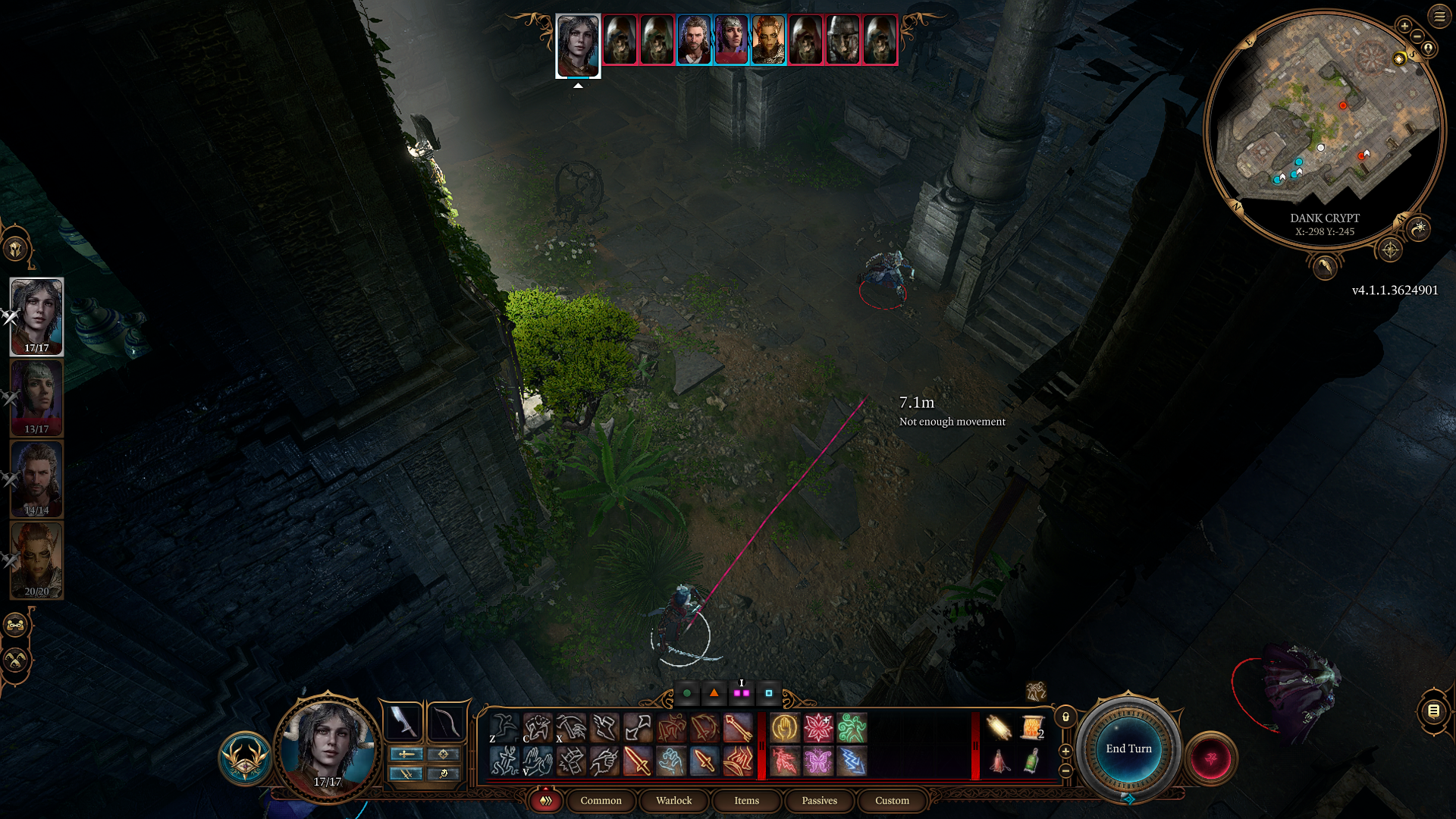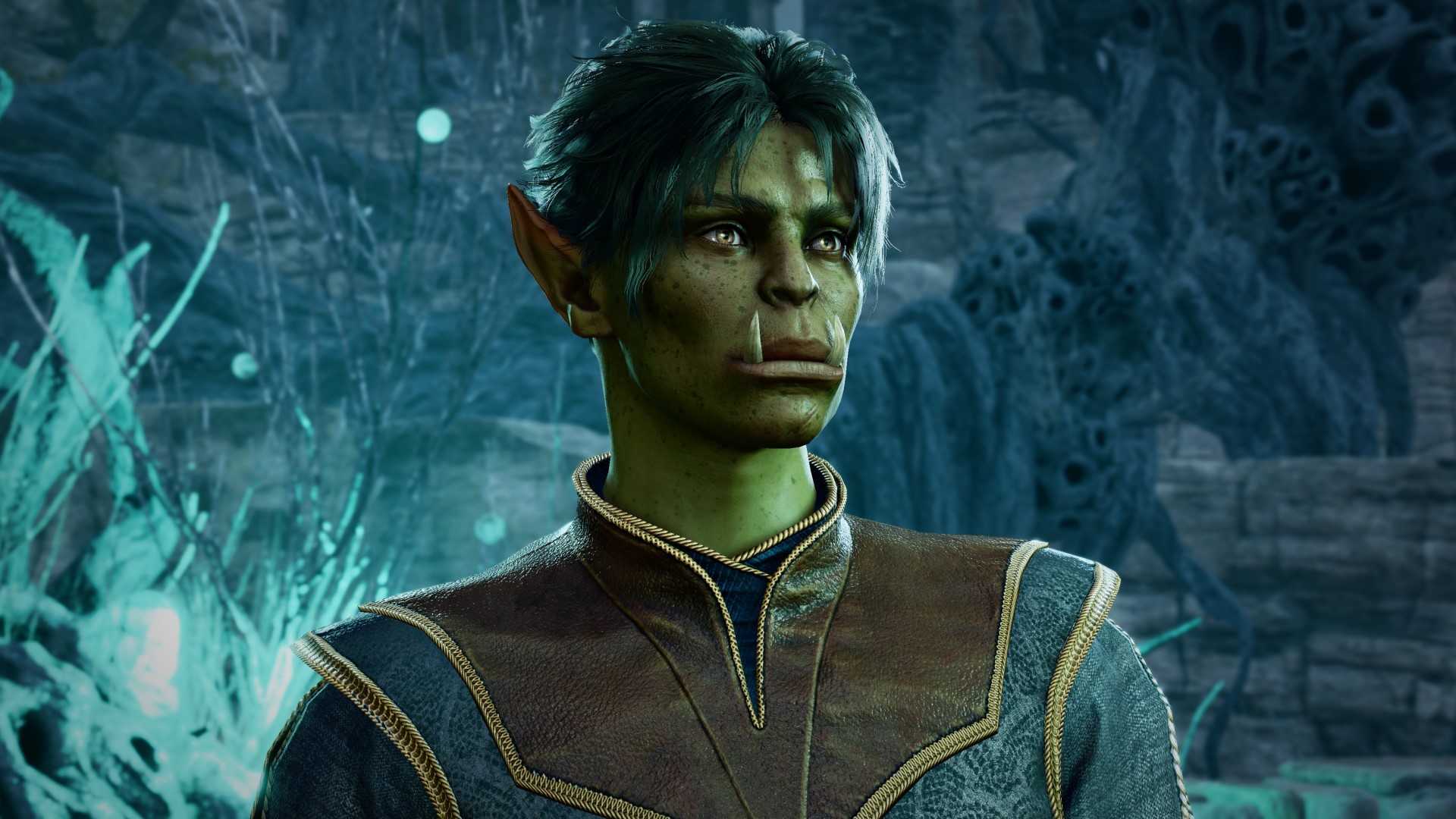Baldur’s Gate 3 fixes problems that Dungeons & Dragons has struggled with for years
Modern Warfare

Baldur’s Gate 3 is quite possibly one of the most enjoyable adaptations of tabletop role-playing juggernaut Dungeons & Dragons that’s ever graced a hard drive. However, Larian Studios' latest offering earns a place amongst the best RPGs not by being 100 percent faithful to the source material, but by knowing when to play fast and loose with D&D orthodoxy.
However, though D&D Fifth Edition creates a strong and consistent rules framework, Larian had to make more than a few changes to create the playground it was looking to build if it was going to create a title to rival the best RPGs. Not only are these changes welcome, but they actively improve the D&D formula, giving battles a sense of physicality and tangibility that they simply lack in the original ruleset.
Take health potions, for instance. In Fifth Edition as written, potions can be administered to a single target, their utility is cut-and-dry. However, in Baldur’s Gate 3, characters can throw potions, causing them to burst open, providing an effect over a wide area. Immediately, whole new worlds of strategic possibility open up. Is it worth lobbing a potion into a difficult combat but healing your enemies in the process? How much of a risk are you willing to take when using your healing items?
Risk isn’t usually a concept we’d usually associate with healing potions
Risk isn’t usually a concept we’d usually associate with healing potions, but Baldur’s Gate 3 has made some of the least interesting items in D&D far more compelling by adding an entirely new dimension for their use. As a result, a well-thrown healing potion feels clever and exciting.
Jumping and shoving are also commonplace in Baldur’s Gate 3, adding not only greater verticality to the combat but also giving battles a sense of weightiness. Stronger, heavy characters can literally push lighter ones around - sometimes to their deaths. The addition of this mechanic makes beefy characters feel strong - something Dungeons & Dragons struggles with beyond giving its stronger characters bigger damage numbers.
A helping hand

As you’d expect from one of the best PC strategy games out there, Baldur’s Gate 3 places great emphasis on how players manage pressure on their party, diverting from D&D as written by changing several key actions as well as the action economy, itself.
Traditionally, the “Help” action in D&D is used to boost an ally’s roll on a specific task, allowing them to roll two dice and pick the highest. In Baldur’s Gate 3, however, “Help” is used to revive downed allies, bringing them back up on a single hit point.
Sign up for breaking news, reviews, opinion, top tech deals, and more.
Suddenly, rather than rendering the helper a background supporter, Baldur’s Gate 3 makes them a vital savior. Plus, given that every party member has access to this action, it means that the downing of your last healer doesn’t necessarily spell the end for your party. It creates both extra opportunities for strategy and a safety net for players, expanding it well beyond its more passive pen-and-paper counterpart.
The action economy itself has also been tweaked by Larian, allowing for more novel approaches
The action economy itself has also been tweaked by Larian, allowing for more novel approaches. Potions only require a bonus action to use, rather than the regular action they require in the D&D tabletop. This allows you to be far more proactive with your potion stock. Gaining situation advantages through potion buffs or a timely heal, but still having time to attack or cast a spell makes for more dynamically paced combat. Turns no longer need to feel wasted on healing or preparation. Savvy potion buyers can have their cake and eat it - though notably, they cannot have their potion and drink it.
Baldur’s Gate 3 takes its encounter pacing seriously, too, breaking up adventures into manigable chunks. Between long rests - nights spent in camp - Larian’s RPG allows you two short rests per day. These refresh certain abilities and allow your party members to recover hit points. They are also instantaneous - a big change from Dungeons & Dragons. In the tabletop game, so-called short rests require an hour of in-game time, a taxing demand that often has parties stop and debate the pros and cons of stopping to rest rather than getting on with the story or, god forbid, actually resting.
Action surge

Baldur’s Gate 3 also spices up weapon attacks by giving each weapon type its own set of unique moves. Usually refreshing every short rest, these techniques help to give the different weapons on offer a real sense of variance and diversity. For instance, sword users can use a bonus action to hit their enemy with a pommel strike, potentially dazing the target and making them vulnerable to further attacks. By contrast, archers can fire a hamstring shot, reducing enemy movement on a successful hit.
In the vanilla D&D tabletop game, basic attacks are rarely this exciting, unless you’re lucky enough to roll a critical hit (or the dreaded natural one). Though the game’s myriad classes are full of tantalizing options for characters in and out of combat, there are relatively few ways to spice up basic attacks. Baldur’s Gate 3, by contrast, generously offers new options to characters of all stripes, so long as they’re using a weapon with which they’re proficient.
Baldur’s Gate 3 generously offers new attack options to characters of all stripes
Magic users also get in on the action, with Baldur’s Gate 3 removing the somatic and material requirements for spells in favor of a few simple magic words. For those not in the know, many spells in D&D require both physical components and free hands to perform, meaning that spellcasters sometimes have to choose between being armed and being able to cast spells. It’s something of a hassle, which, in my experience, many Dungeon Masters ignore altogether. Fortunately, Larian has followed suit, allowing spellcasters to show off their arcane prowess without having to faff around with component pouches or swapping around weapon load-outs.

D&D has a long history of what is called “house rules” - permutations to the established ruleset agreed upon by groups of players to reduce headaches and make the game more fun. Across all of these changes, Larian looks as though it’s taken this tradition to heart by not only making the D&D Fifth Edition rules cohere with the interactive video game landscape but also by adding their own flair and flourishes, so as to offer its own unique flavor of Dungeons & Dragons.
As a Dungeon Master myself, with over 10 years of experience, I can confirm that taking this kind of initiative is in the finest tradition of tabletop RPGs and shows Larian’s deep understanding of the genre. In this way, Baldur’s Gate 3’s divergence from D&D’s rules as written doesn’t just make it a better video game but also makes it a better Dungeons & Dragons game.
If you're still waiting for Baldur's Gate 3's PS5 release on September 6 or its future release on Xbox Series X|S, our lists of the best PS5 games and the best Xbox Series X games will help you stay busy in the meantime.

An editor and freelance journalist, Cat Bussell has been writing about video games for more than four years and, frankly, she’s developed a taste for it. As seen on TechRadar, Technopedia, The Gamer, Wargamer, and SUPERJUMP, Cat’s reviews, features, and guides are lovingly curated for your reading pleasure.
A Cambridge graduate, recovering bartender, and Cloud Strife enjoyer, Cat’s foremost mission is to bring you the best coverage she can, whether that’s through helpful guides, even-handed reviews, or thought-provoking features. She’s interviewed indie darlings, triple-A greats, and legendary voice actors, all to help you get closer to the action. When she’s not writing, Cat can be found sticking her neck into a fresh RPG or running yet another Dungeons & Dragons game.